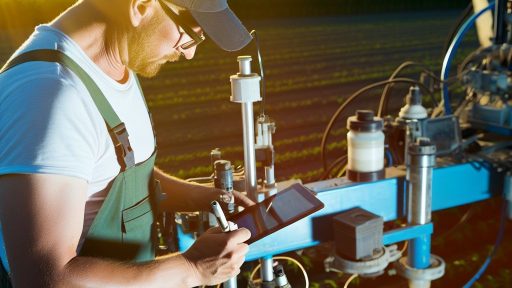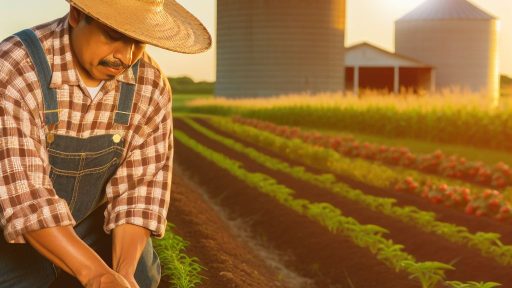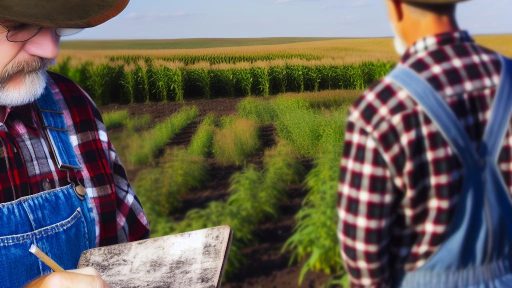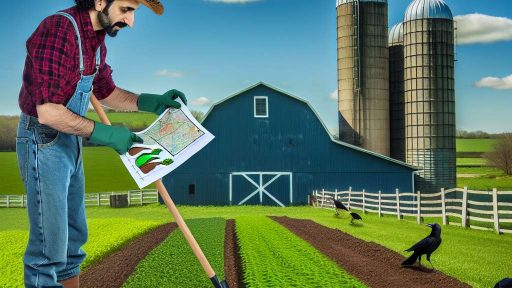Introduction to Farm Automation
Benefits of Farm Automation
Farm automation significantly boosts efficiency across various operations.
It reduces labor costs by minimizing manual tasks.
Additionally, automation enhances precision in planting and harvesting.
This technology can optimize resource usage, such as water and fertilizers.
Farmers benefit from increased yield and reduced waste.
Moreover, automation allows for improved data collection and analysis.
This leads to better decision-making in farming practices.
Challenges of Implementing Automation
Despite its benefits, farm automation presents several challenges.
Initial investment costs can be quite high for advanced technology.
Training staff to operate new systems requires time and resources.
Additionally, older farms may face infrastructure limitations.
There is also a risk of technology failures disrupting operations.
Lastly, transitioning to automated systems can meet resistance from workers.
Impact on Farm Management
Automation reshapes traditional farm management approaches.
Farmers can manage operations remotely using advanced tools.
Transform Your Agribusiness
Unlock your farm's potential with expert advice tailored to your needs. Get actionable steps that drive real results.
Get StartedThis flexibility allows real-time monitoring of crops and livestock.
Consequently, proactive measures can be implemented promptly.
Furthermore, insights generated from data can guide future strategies.
Farmers increasingly focus on sustainability while employing automation.
Emerging Automation Technologies
Numerous technologies are revolutionizing farm operations today.
Drones are becoming popular for monitoring large fields.
Robotics assist with manual labor in planting and harvesting tasks.
Artificial intelligence enhances decision-making processes.
Moreover, sensors are deployed to collect real-time environmental data.
All these technologies work collectively to streamline farming operations.
Overview of Cutting-Edge Agricultural Tools and Technologies
Introduction to Agricultural Innovation
Agriculture continually evolves with technology.
New tools enhance efficiency and productivity.
Innovative machinery and software streamline farm operations.
Precision Agriculture
Precision agriculture uses technology for optimal crop management.
Farmers utilize GPS and IoT devices for data collection.
These tools provide insights on soil health and moisture levels.
As a result, they inform planting and irrigation decisions.
Benefits of Precision Agriculture
- Reduces resource waste.
- Increases crop yields.
- Enhances environmental sustainability.
Automation in Livestock Management
Automation improves livestock management significantly.
Robotic feeding systems streamline daily operations.
Additionally, monitoring systems track animal health effectively.
These innovations allow farmers to focus on strategic tasks.
Examples of Livestock Automation Tools
- Automated feeders.
- Health monitoring collars.
- Smart milking machines.
Drone Technology
Drones serve as valuable tools in modern agriculture.
They conduct aerial surveys and monitor crop conditions.
Farmers can assess land from unique perspectives.
Showcase Your Farming Business
Publish your professional farming services profile on our blog for a one-time fee of $200 and reach a dedicated audience of farmers and agribusiness owners.
Publish Your ProfileThis tool enhances decision-making for farming practices.
Advantages of Using Drones
- Provides real-time data from large areas.
- Helps identify pest infestations early.
- Aids in planning precise interventions.
Blockchain in Agriculture
Blockchain technology enhances transparency in the supply chain.
It allows for traceability of produce and livestock.
Farmers can verify product origins and handling methods.
This builds trust with consumers and protects brands.
Impact of Blockchain on the Agricultural Sector
- Improves food safety through traceability.
- Streamlines transactions between growers and buyers.
- Reduces fraud and increases accountability.
Future Directions in Agricultural Innovation
Integrating advanced tools is vital for future agriculture.
Technology boosts productivity and promotes sustainability.
The industry is poised for continued innovation.
Drones in Agriculture: Applications and Advantages
Introduction to Agricultural Drones
Drones are transforming the agriculture industry significantly.
They offer innovative solutions for various farming tasks.
Farmers increasingly adopt these technologies for efficiency.
Key Applications of Drones
Drones serve multiple purposes in agriculture.
They monitor crop health effectively using advanced sensors.
This capability allows farmers to detect issues early.
Additionally, drones facilitate precise irrigation management.
They provide aerial views to optimize water usage.
Drones also assist in precision planting and seeding.
Farmers can improve crop yield through accurate placement.
Advantages of Using Drones
The use of drones in agriculture leads to numerous benefits.
Firstly, drones save time and labor costs on farms.
They cover large areas quickly compared to traditional methods.
Moreover, drones offer enhanced data collection capabilities.
This data is crucial for informed decision-making.
Furthermore, drones minimize the environmental impact of farming.
They help reduce the usage of chemicals and fertilizers.
Consequently, this leads to more sustainable farming practices.
Case Studies in Drone Implementation
Many farms successfully integrate drones into their operations.
For instance, Greenfield Farms saw a 30% increase in yield after adopting drone technology.
Similarly, Harvest Innovations reduced water usage significantly.
This reduction occurred due to precise irrigation controlled by drones.
Future Prospects of Drones in Agriculture
The future of drones in farming looks promising.
Technological advancements continue to enhance their capabilities.
Integration with AI will improve data analysis and prediction.
As a result, farmers will make better strategic decisions.
Drones will play a critical role in modern farming.
Gain More Insights: Understanding Farm Insurance To Ensure Financial Stability
Precision Farming: Utilizing Data for Improved Crop Yields
The Role of Data in Agriculture
Data plays a crucial role in modern agriculture.
Farmers now rely on extensive datasets to make informed decisions.
This data includes weather patterns, soil conditions, and crop health indicators.
By analyzing these variables, farmers can optimize their operations.
Showcase Your Farming Business
Publish your professional farming services profile on our blog for a one-time fee of $200 and reach a dedicated audience of farmers and agribusiness owners.
Publish Your ProfileBenefits of Precision Farming
Precision farming offers numerous benefits to agricultural producers.
Firstly, it enhances efficiency in resource usage.
This leads to reduced waste and increased profitability.
Moreover, precision farming improves crop yields significantly.
Farmers can apply fertilizers and pesticides more accurately.
Consequently, they minimize environmental impacts.
Technological Innovations
Technological advancements have revolutionized farming practices.
Drones provide aerial imagery for better field analysis.
IoT sensors monitor soil moisture and nutrient levels in real time.
Furthermore, machine learning algorithms predict crop performance.
These tools enable farmers to automate many routine tasks.
Data-Driven Decision Making
Data-driven decision making leads to improved agricultural outcomes.
Farmers can assess the effectiveness of their practices quickly.
This process allows for timely adjustments and interventions.
Additionally, it fosters transparency and accountability.
Case Studies
Many farms have successfully implemented precision farming techniques.
For example, Green Valley Farms utilized drones to monitor crop health.
This approach resulted in a 20% increase in yield within a year.
Similarly, Sunny Fields partnered with tech firms to integrate IoT sensors.
This collaboration enhanced their water management practices substantially.
Future Trends
The future of precision farming looks promising.
Emerging technologies will continue to enhance agricultural efficiency.
Furthermore, sustainable practices will likely become more prevalent.
Farmers will increasingly adopt data analytics for strategic planning.
Discover More: Utilizing Technology to Support Farm Diversification
Automated Irrigation Systems: Enhancing Water Efficiency
Introduction to Automated Irrigation
Automated irrigation systems revolutionize farming practices.
They optimize water usage while ensuring crops receive the right amount of moisture.
Farmers can manage their water resources efficiently through these systems.
Types of Automated Irrigation Systems
Several types of automated irrigation systems exist today.
Drip irrigation delivers water directly to the plant roots.
This method minimizes water waste and reduces evaporation.
Sprinkler systems distribute water over a large area.
These systems can adapt to different terrains and crops.
Benefits of Automation in Irrigation
Automated irrigation systems provide numerous benefits.
- They conserve water, making farming more sustainable.
- Farmers save time since automation reduces manual efforts.
- These systems improve crop yields with precise watering schedules.
- They can operate remotely, allowing for monitoring from anywhere.
Challenges and Considerations
While automated irrigation systems are beneficial, some challenges exist.
Initial costs can be high, deterring some farmers from implementation.
Maintenance of these systems requires technical knowledge and skills.
Weather conditions can also impact system efficiency and performance.
Future of Automated Irrigation
The future of automated irrigation systems looks promising.
Technological advancements continue to enhance their capabilities.
Showcase Your Farming Business
Publish your professional farming services profile on our blog for a one-time fee of $200 and reach a dedicated audience of farmers and agribusiness owners.
Publish Your ProfileIntegration with IoT can lead to smarter management solutions.
Farmers will likely adopt these technologies to meet sustainability goals.
Uncover the Details: Efficient Irrigation Methods To Reduce Farming Costs
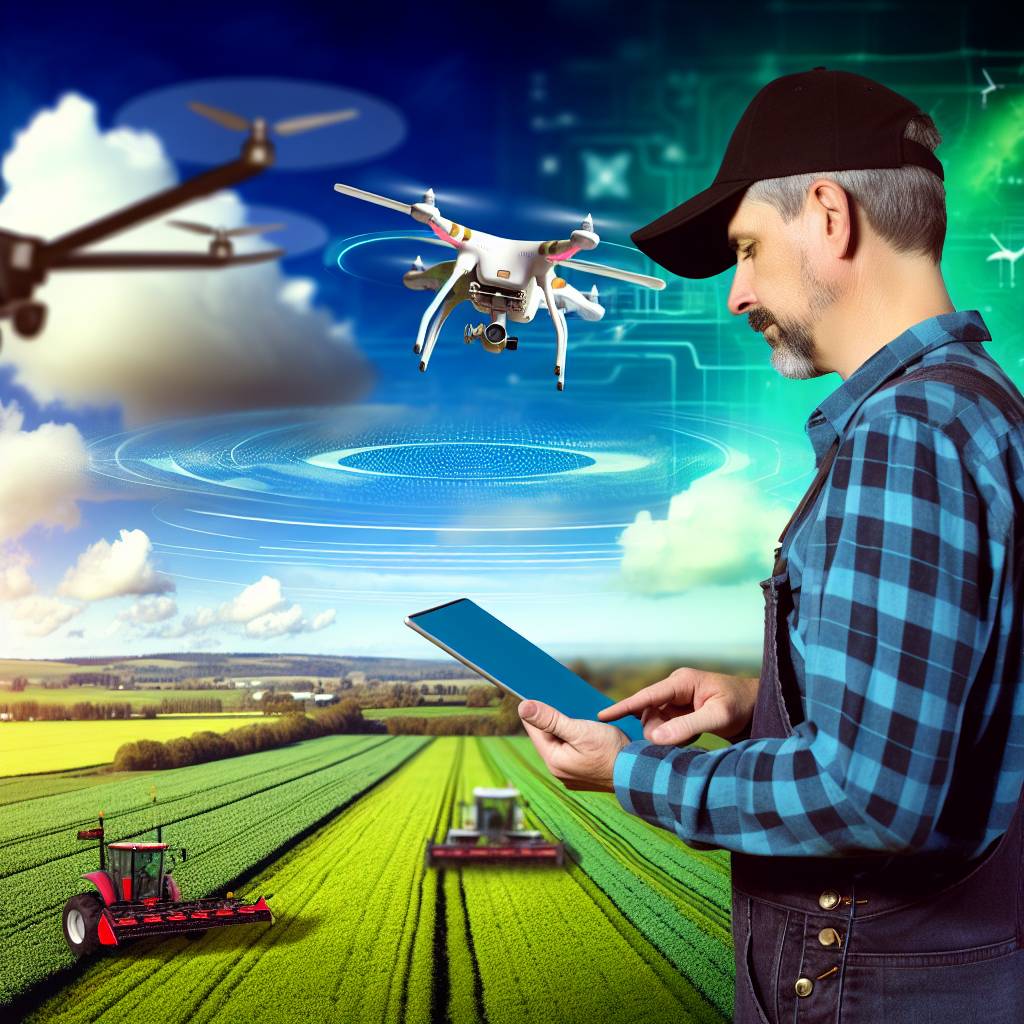
Robotics in Farming: Tasks and Innovations
Introduction to Robotics in Agriculture
Robotics is transforming agriculture, enhancing efficiency and productivity.
Farmers increasingly utilize robotic technologies for various tasks.
These innovations streamline processes, reduce labor, and minimize costs.
Types of Agricultural Robots
Several types of robotic systems are prevalent in modern farming.
- Autonomous tractors perform tilling and planting with precision.
- Drones monitor crop health and manage irrigation efficiently.
- Harvesting robots efficiently gather crops, reducing waste.
Impact on Crop Management
Robots improve crop management through data collection and analysis.
These systems assess soil conditions, helping optimize planting strategies.
Furthermore, they detect pests early, enabling targeted interventions.
Enhancing Labor Efficiency
Robotics addresses labor shortages in agriculture effectively.
Robotic systems can work tirelessly, unlike human workers.
Consequently, tasks can be completed faster and with greater accuracy.
Recent Innovations in Agricultural Robotics
Recent advancements in technology drive agricultural robotics forward.
Artificial intelligence enhances robotic decision-making and adaptability.
Robots now feature advanced sensors for real-time monitoring and adjustments.
Innovations in energy efficiency extend operational hours for these machines.
Challenges and Considerations
Implementing robotics in farming comes with challenges.
High initial costs may be a barrier for some farmers.
Additionally, ongoing maintenance and training are essential for success.
Farmers must consider the integration of robots with existing systems.
The Future of Robotics in Agriculture
The future of robotics in agriculture looks promising and exciting.
Continued innovations will enhance capabilities and affordability.
As technology evolves, farmers will increasingly rely on these tools.
This evolution will transform the agricultural landscape globally.
Learn More: Enhancing Farm Efficiency Through Supply Chain Optimization
Integrating AI and Machine Learning in Crop Management
Enhancing Decision-Making with Data
Artificial Intelligence (AI) transforms crop management significantly.
This technology analyzes vast amounts of agricultural data effectively.
Farmers can access insights that improve decision-making processes.
For instance, AI algorithms predict optimal planting times.
They also assist in managing irrigation schedules accurately.
Consequently, these advancements enhance overall crop yields.
Streamlining Operations through Automation
Machine learning enables automated assessments of field conditions.
Farmers use drones equipped with AI to monitor crop health.
This method reduces the need for manual inspections significantly.
Additionally, AI-driven robots can even help with planting and harvesting.
Thus, automation reduces labor costs and increases efficiency.
Predicting and Managing Pests and Diseases
AI tools assist in identifying pest infestations early.
They analyze patterns from historical data and real-time observations.
By predicting outbreaks, farmers can take proactive measures.
Showcase Your Farming Business
Publish your professional farming services profile on our blog for a one-time fee of $200 and reach a dedicated audience of farmers and agribusiness owners.
Publish Your ProfileFurthermore, AI helps in recommending targeted pesticide applications.
This approach minimizes chemical usage and promotes sustainability.
Improving Resource Management
AI and machine learning optimize resource allocation on farms.
Farmers can manage water usage through intelligent irrigation systems.
Additionally, these systems reduce wastage and conserve resources effectively.
With better data, farmers can adjust fertilizer applications accordingly.
As a result, they enhance soil health and crop productivity.
Gaining Insights from Predictive Analytics
Predictive analytics provides valuable forecasts for crop production.
Farmers utilize AI to analyze market trends and demand forecasts.
This information allows them to plan better for future seasons.
Moreover, they can reduce financial risks related to market fluctuations.
Future Trends in Agricultural Automation and Sustainability
Emerging Technologies in Farming
Farm operations are rapidly transforming due to technological advancements.
Robotics and AI play crucial roles in this evolution.
For instance, autonomous tractors streamline fieldwork.
Moreover, drones provide efficient crop monitoring solutions.
These tools save time and reduce labor costs significantly.
Data-Driven Decision Making
Farmers increasingly utilize data analytics for better decision making.
Precision agriculture optimizes inputs like water and fertilizers.
This approach minimizes waste and enhances yields.
Farm management software simplifies tracking and forecasting.
Consequently, farmers can forecast future yields accurately.
Sustainable Practices and Automation
Sustainability goes hand-in-hand with automation in modern farming.
Automated irrigation systems conserve water effectively.
Additionally, renewable energy sources power various agricultural tools.
These practices help reduce the carbon footprint of farming operations.
Furthermore, crop rotation and cover cropping enhance soil health.
The Role of Artificial Intelligence
Artificial Intelligence enhances agricultural efficiency dramatically.
AI algorithms analyze vast amounts of data quickly.
This capability enables farmers to make informed decisions.
Predictive analytics forecast pest outbreaks and optimize harvest times.
As a result, farmers can respond proactively to challenges.
Future Partnerships and Collaborations
Collaboration among tech companies and farmers is crucial for success.
Partnerships enable knowledge sharing and resource pooling.
Innovative solutions often emerge from industry partnerships.
Consequently, farmers benefit from shared expertise and cutting-edge tools.
Such collaborations promote a sustainable agricultural ecosystem.
Additional Resources
U.S. Agriculture Innovation Strategy Directional Vision for Research
Shirin Ghatrehsamani (Samani), Ph.D. – Assistant Professor – Penn …

